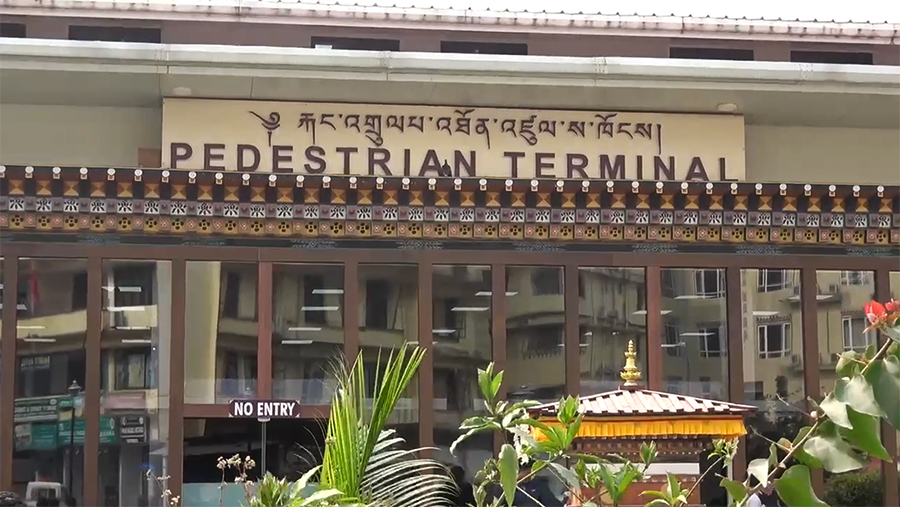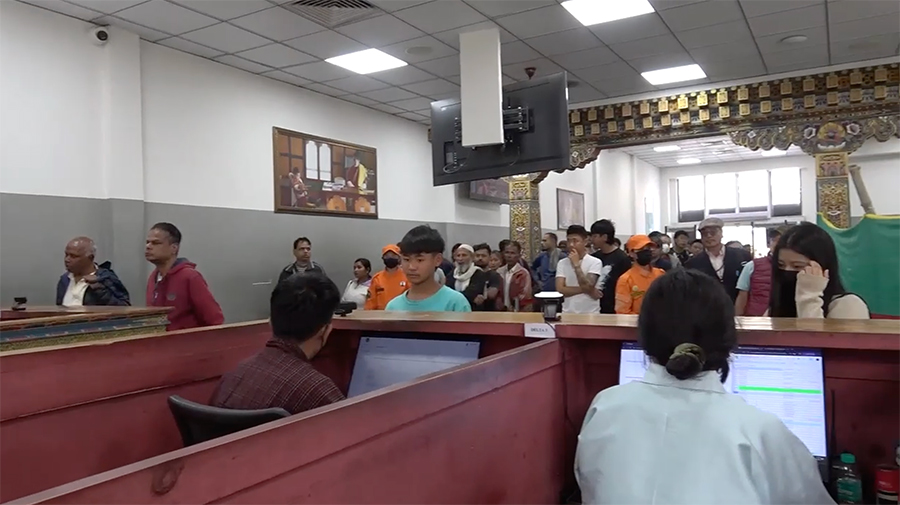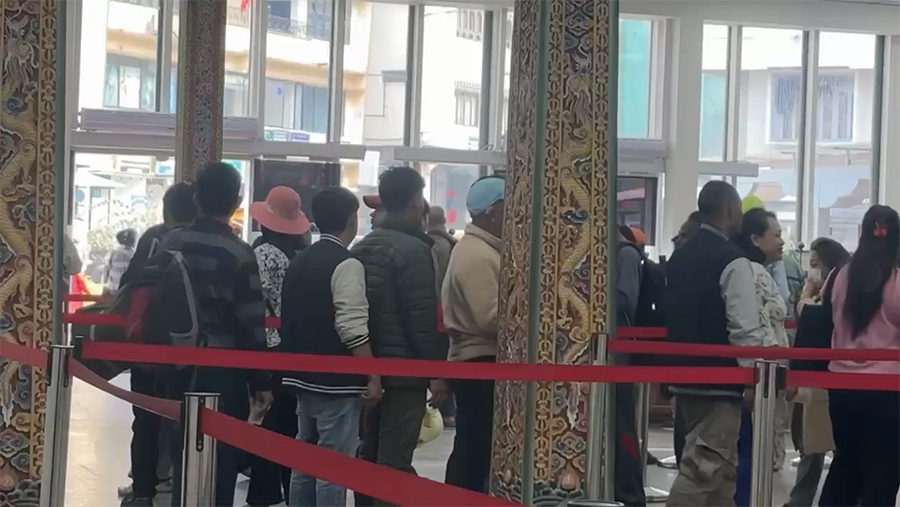 In a major move toward automation and enhancing public service delivery, the pedestrian terminal in Phuentshogling is undergoing a significant transformation. E-gates are being installed that will streamline immigration clearance for cross-border movement, making travel efficient with facial recognition and biometric technology.
In a major move toward automation and enhancing public service delivery, the pedestrian terminal in Phuentshogling is undergoing a significant transformation. E-gates are being installed that will streamline immigration clearance for cross-border movement, making travel efficient with facial recognition and biometric technology.
 The pedestrian terminal in Phuentshogling is a hive of activity. A large number of travellers make their way to and from the neighbouring town while major transformation works are in full swing inside the terminal.
The pedestrian terminal in Phuentshogling is a hive of activity. A large number of travellers make their way to and from the neighbouring town while major transformation works are in full swing inside the terminal.
Immigration officials say this automation project is a key priority under the 13th Five-Year Plan, with plans to expand the system to other border gates in the future.
“We are installing e-gates. Right now, we have counters to facilitate travel, and people have to come with their CID. And it has been challenging when people forget to bring their identity card. With this new system, people can travel easily with facial recognition and biometrics,” said Jigme Tenzin, Regional Director of Phuentshogling Regional Immigration.
So far, ten e-gates have been installed at the entry point, while eight are being set up for exit clearance.
Officials initially planned for ten exit gates, but limited space has forced adjustments.
For Bhutanese travellers, officials will be using biometric data, which was initiated years ago. For non-Bhutanese, officials are collecting their biometric data.
For Bhutanese who did not give their biometric data, there will be a few counters operating manually using Citizenship Identity Cards.
Meanwhile, the ongoing transformation has led to a temporary reduction in the number of manual counters.
 To manage the crowd, separate lanes have been designated for Bhutanese and foreign travellers. Additional temporary staff have also been deployed to assist travellers and ensure smooth processing.
To manage the crowd, separate lanes have been designated for Bhutanese and foreign travellers. Additional temporary staff have also been deployed to assist travellers and ensure smooth processing.
The new system is expected to be launched later this month, bringing a major shift in border clearance procedures.
Kinley Dem, Phuentshogling
Edited by Tshering Zam








